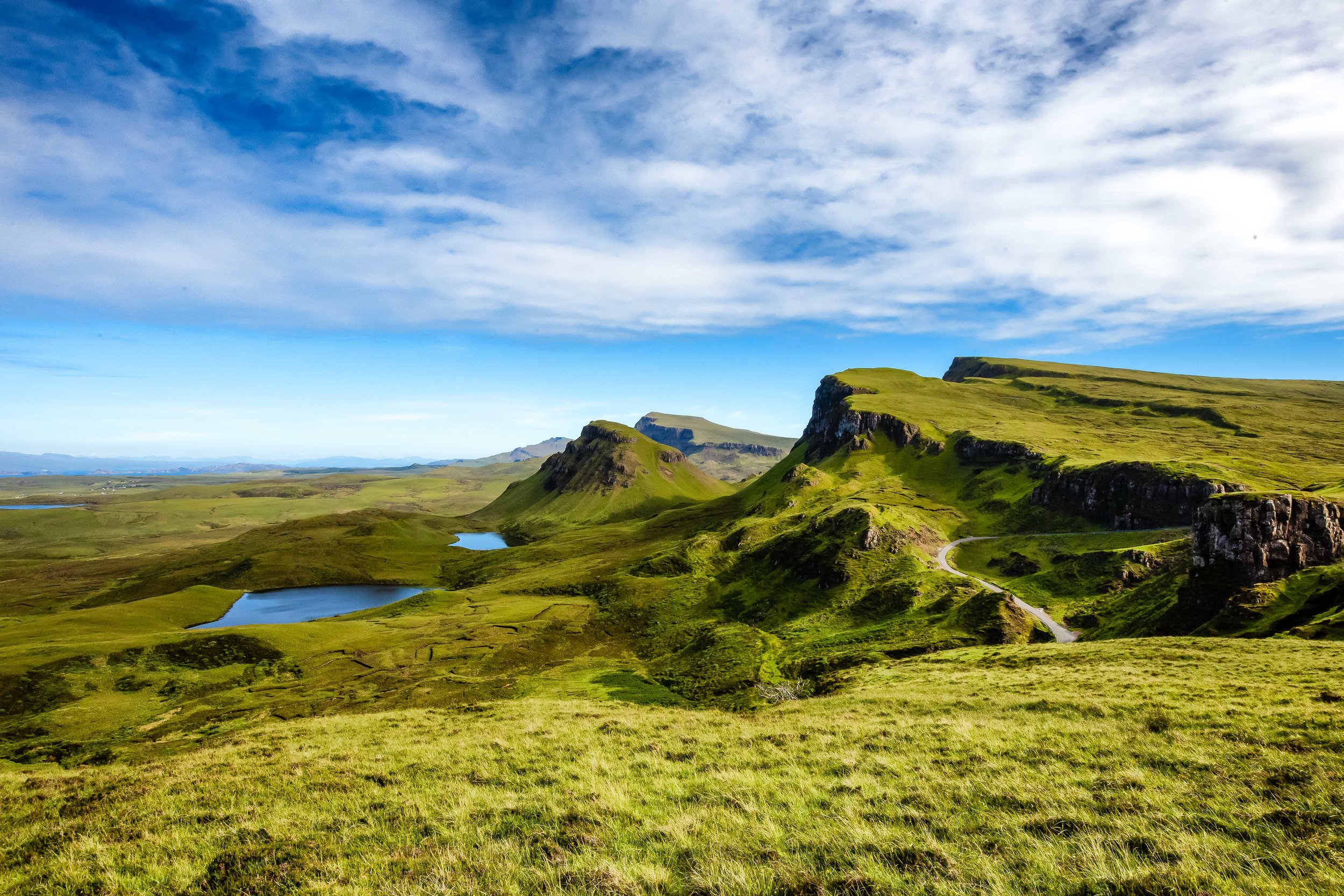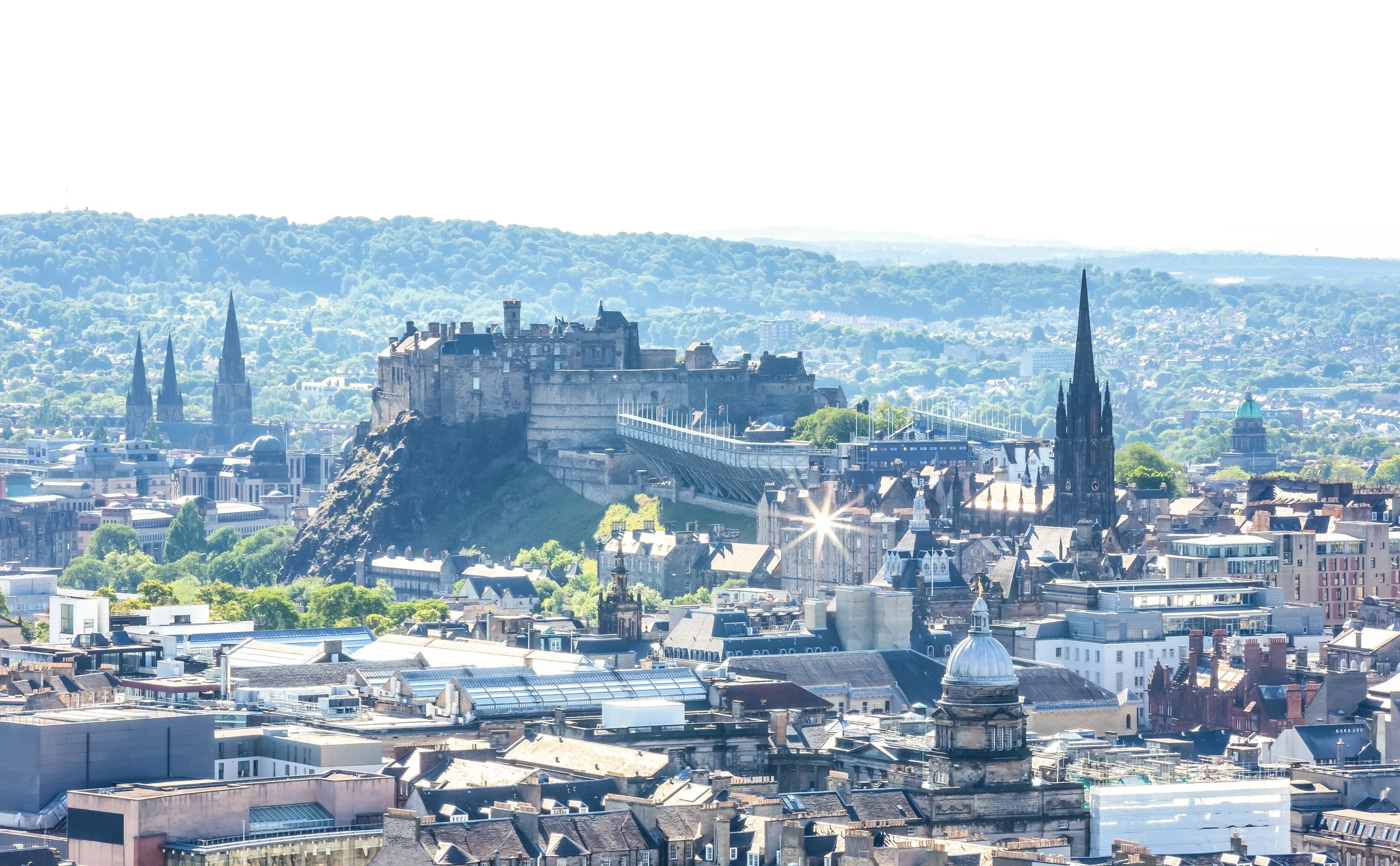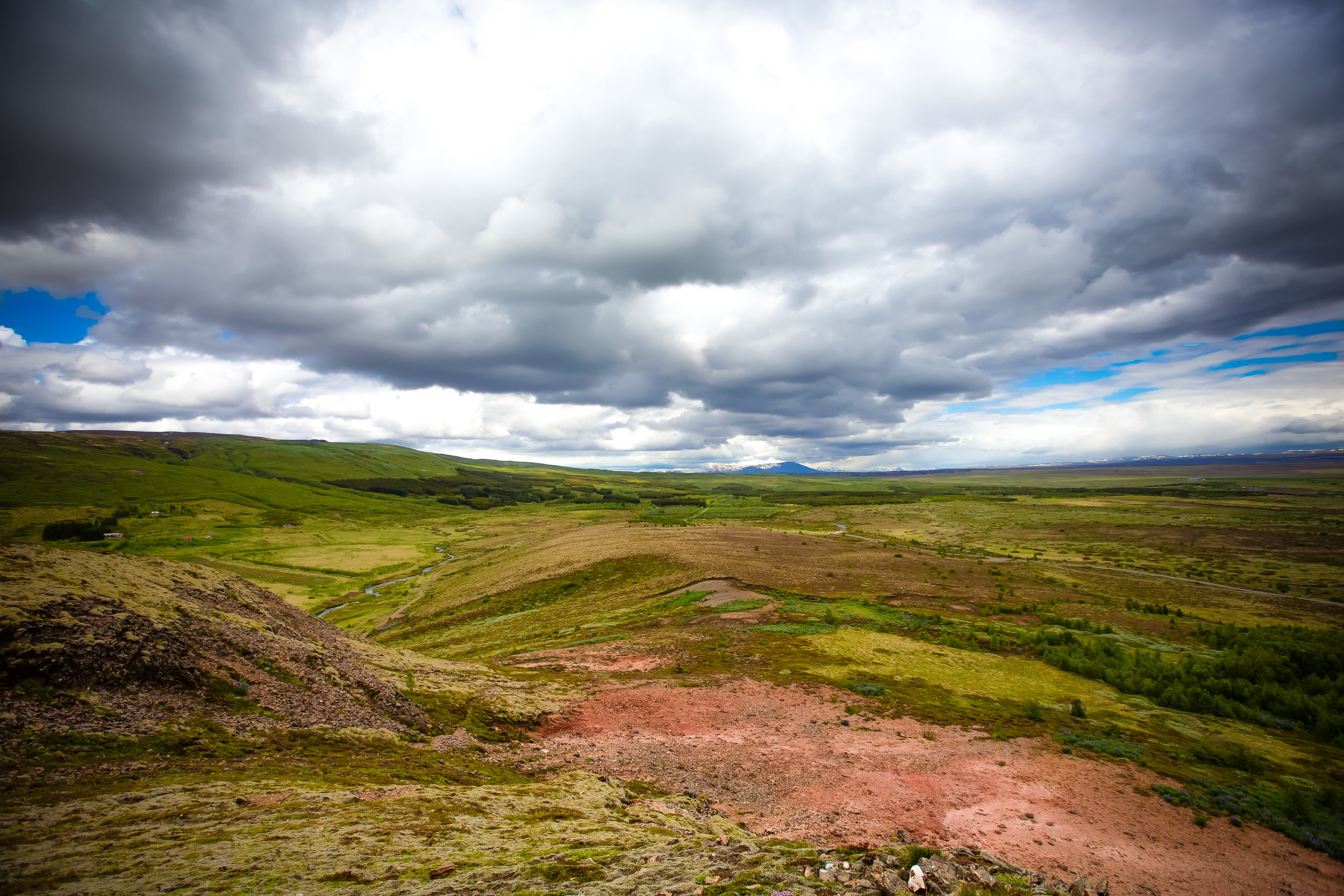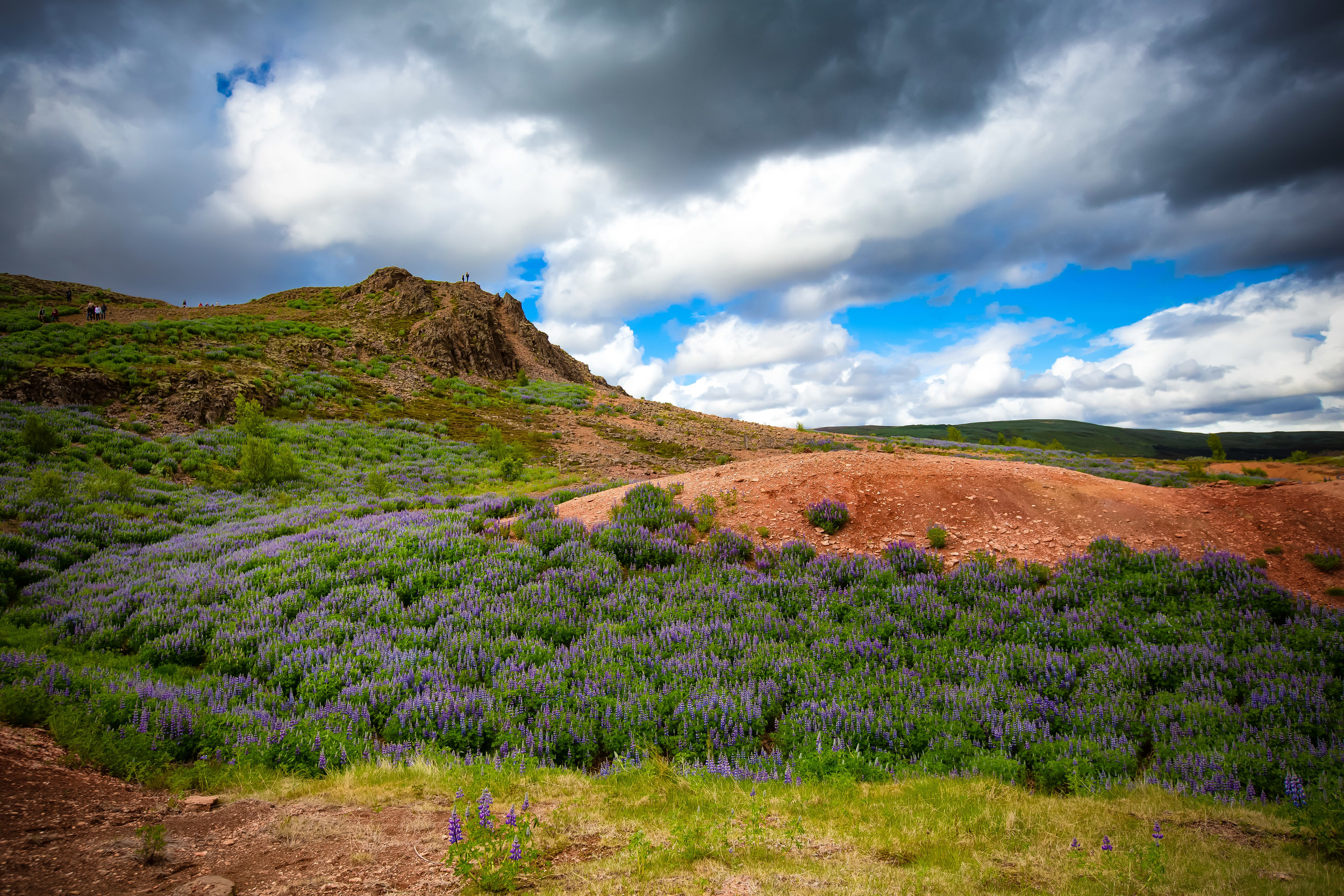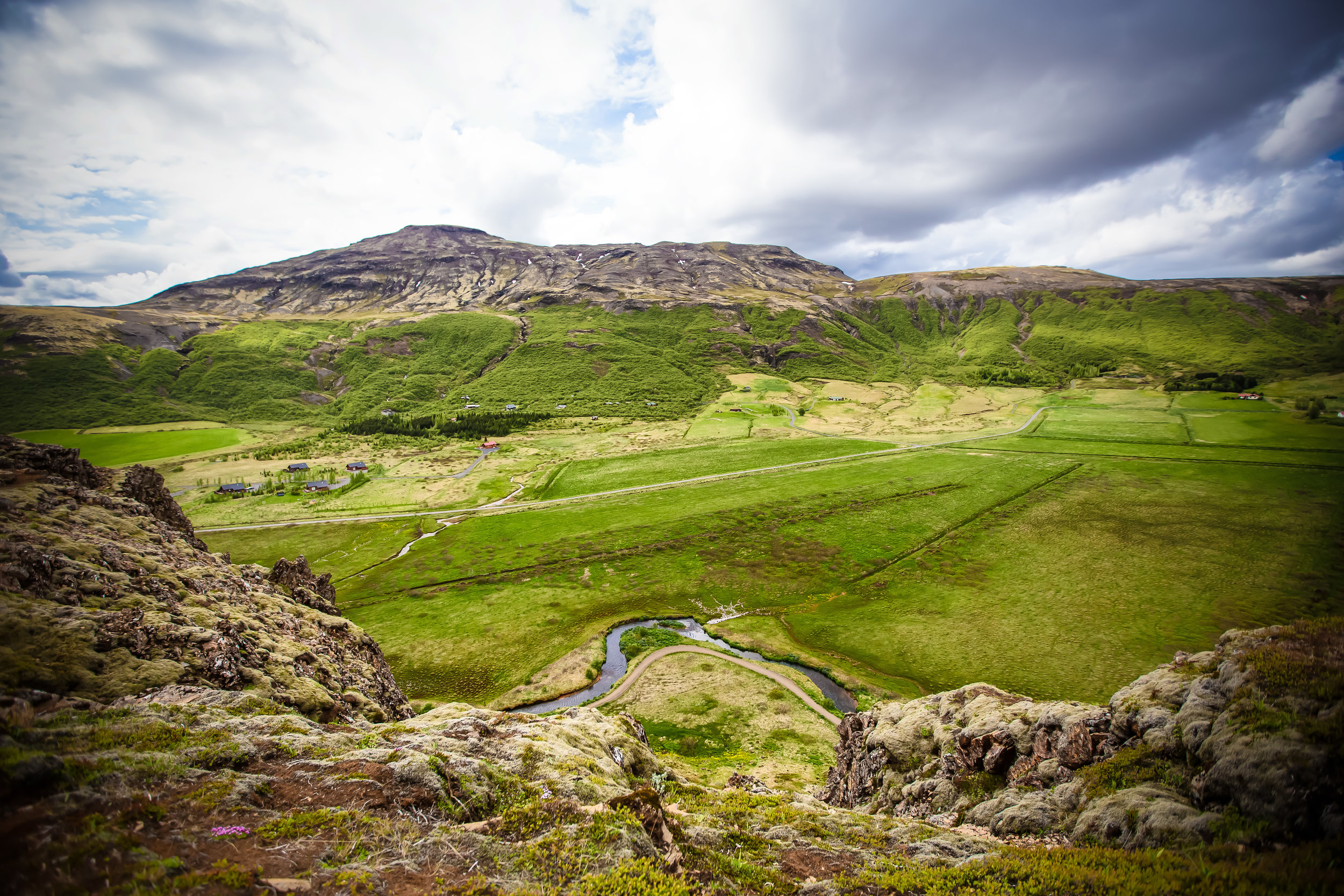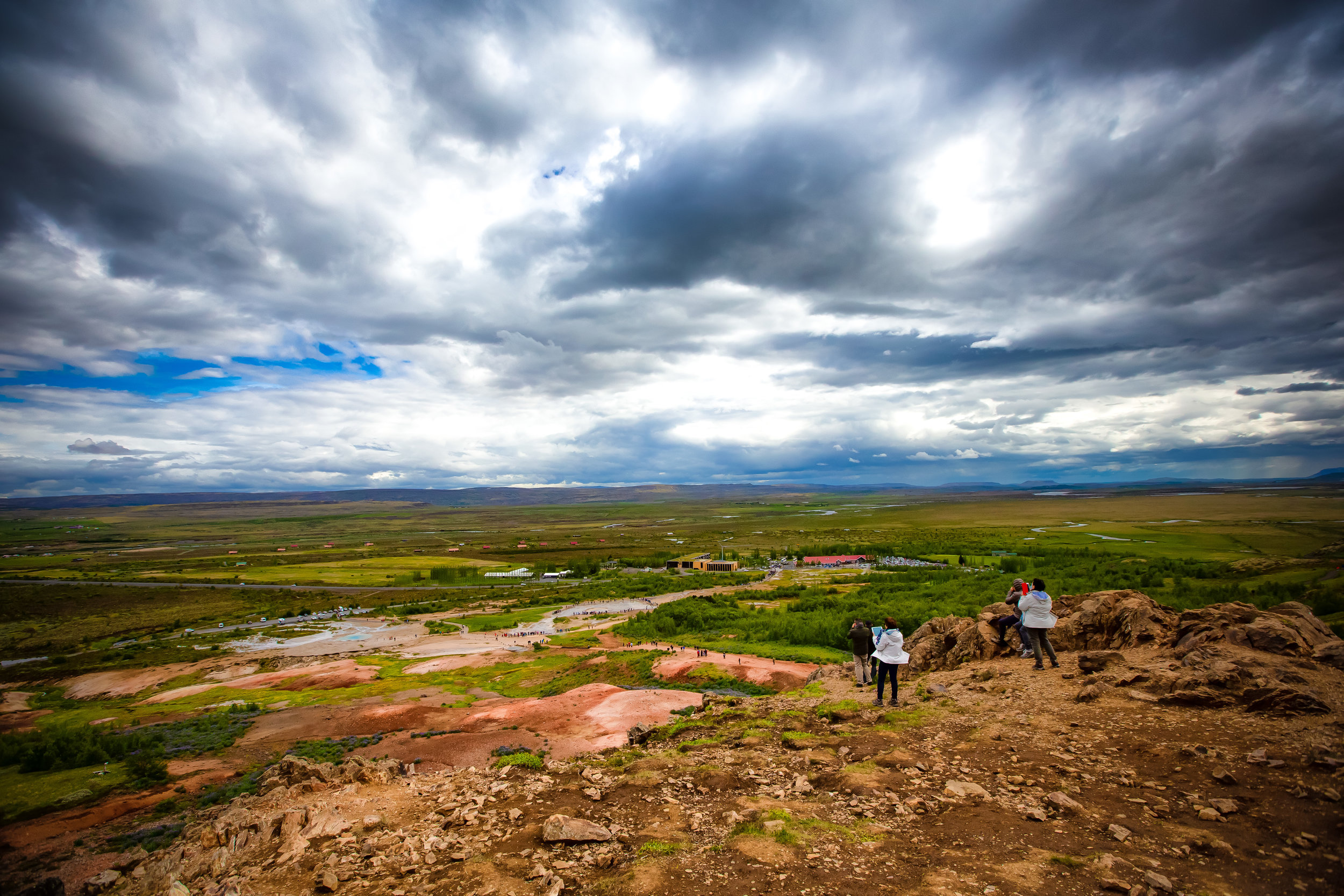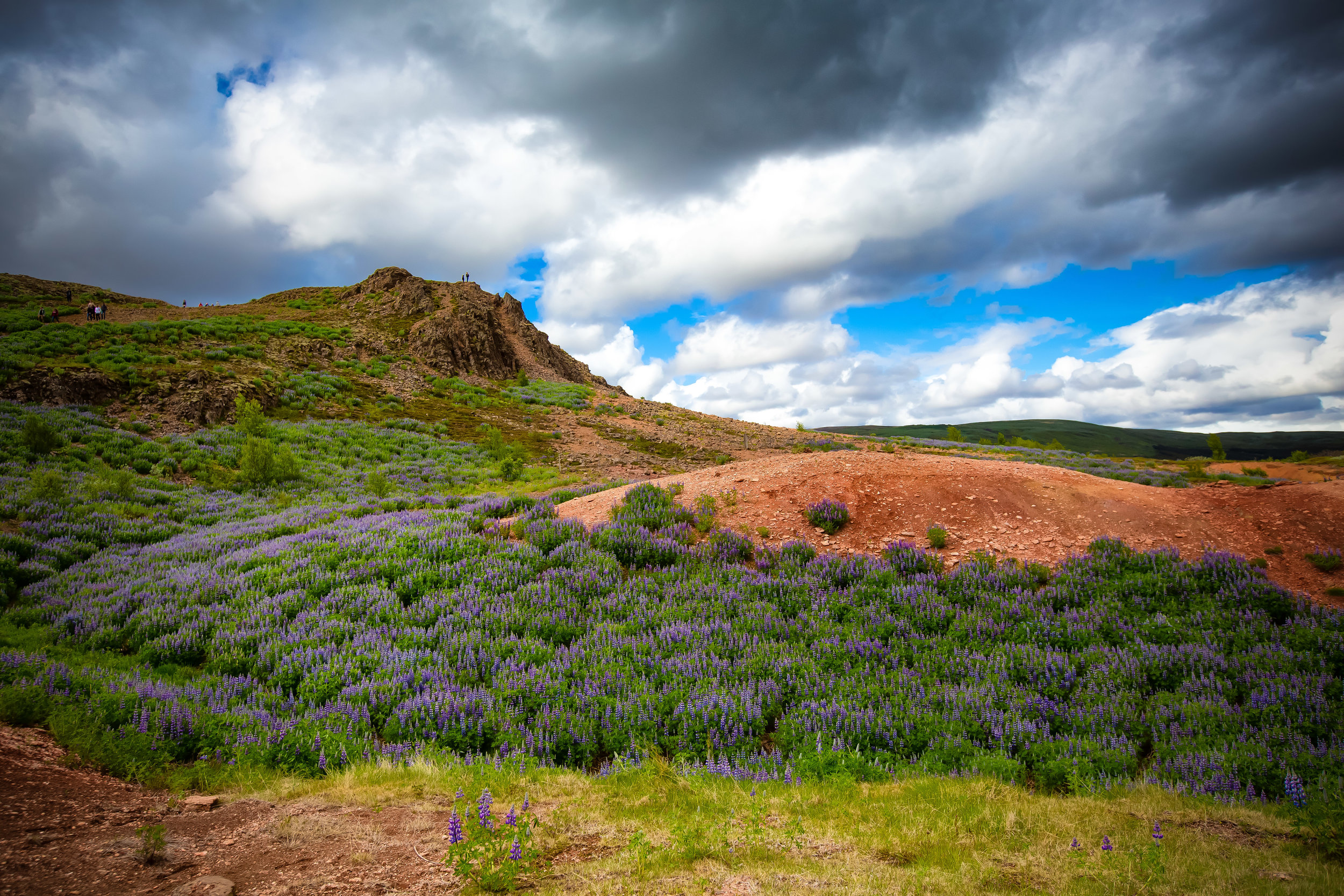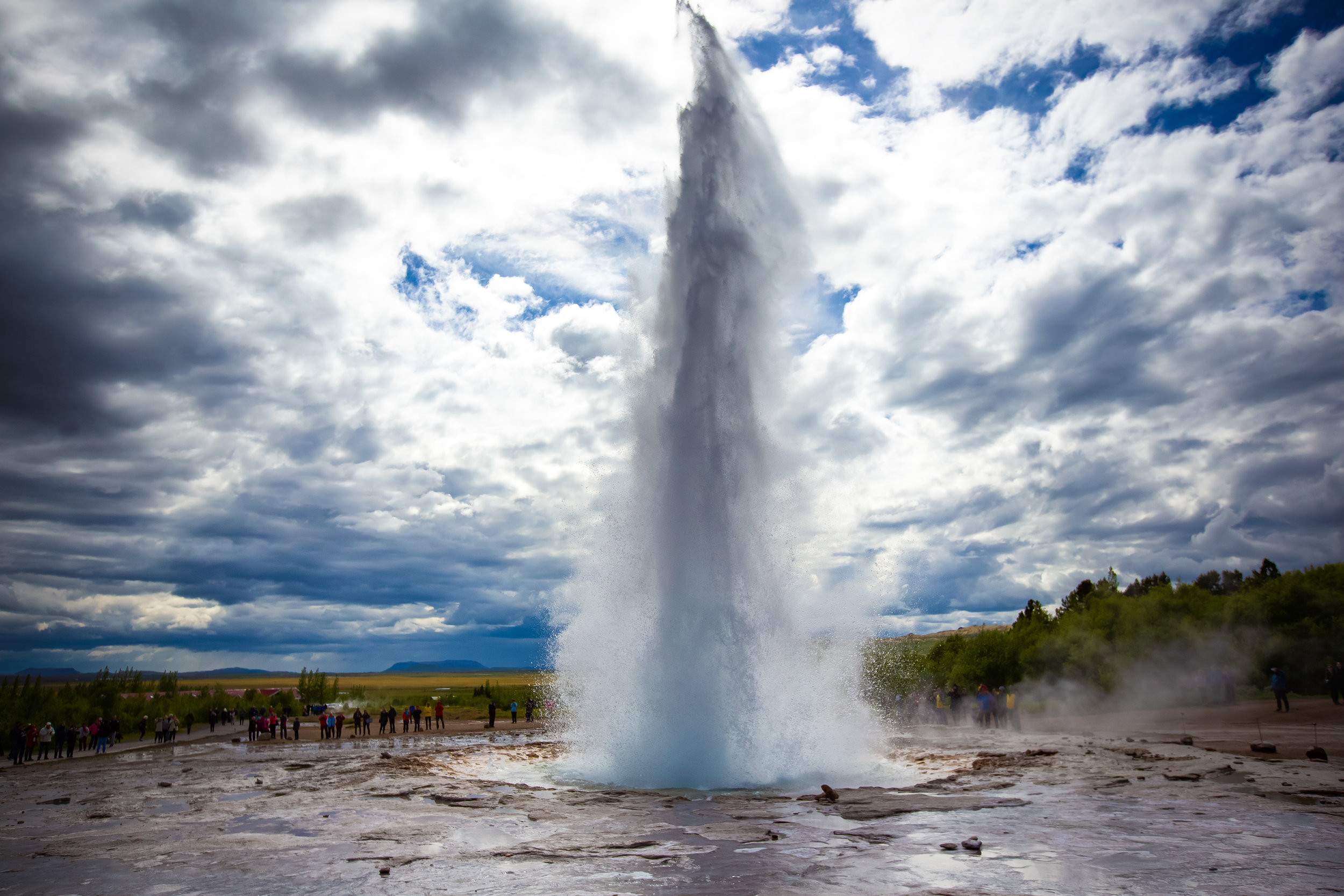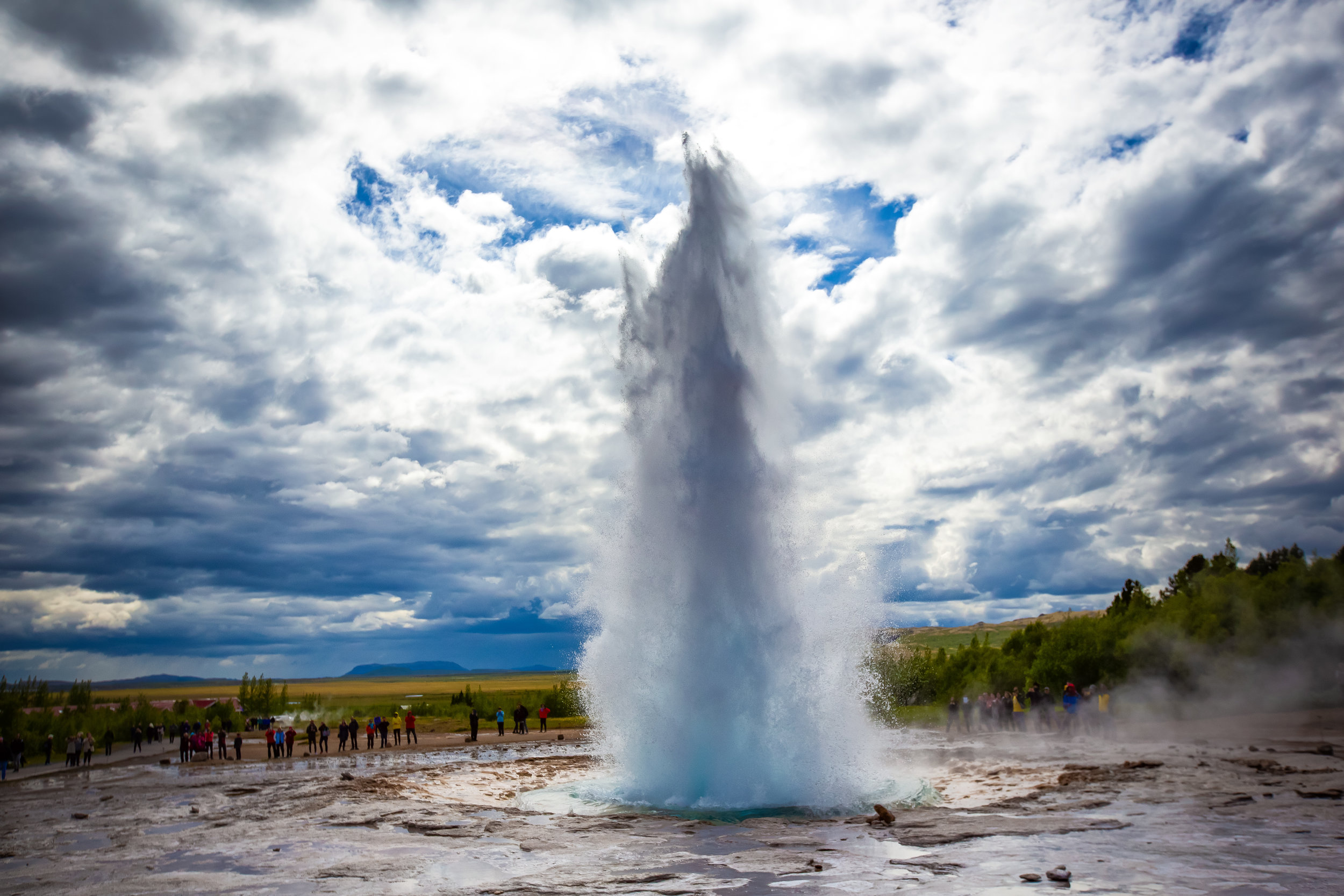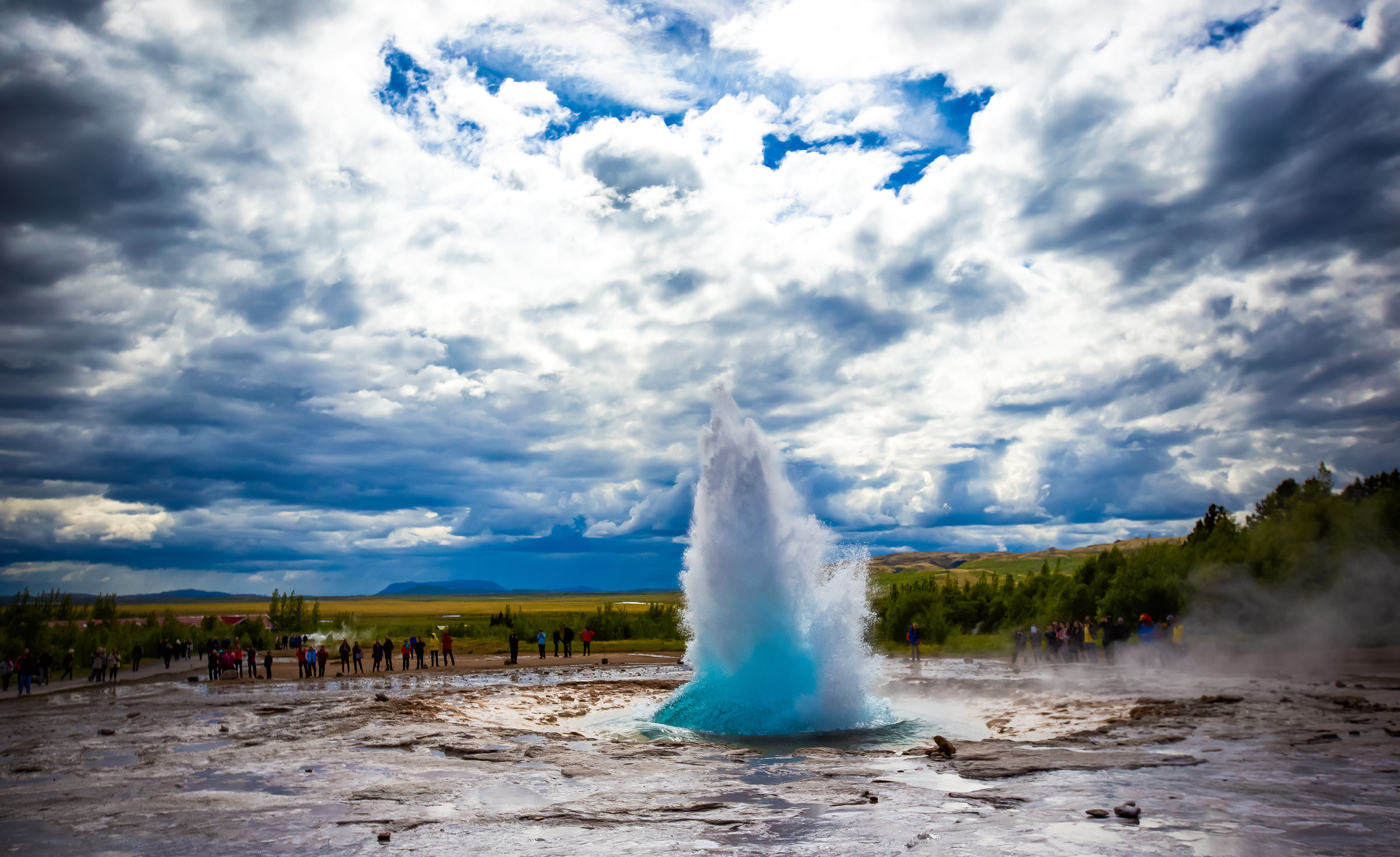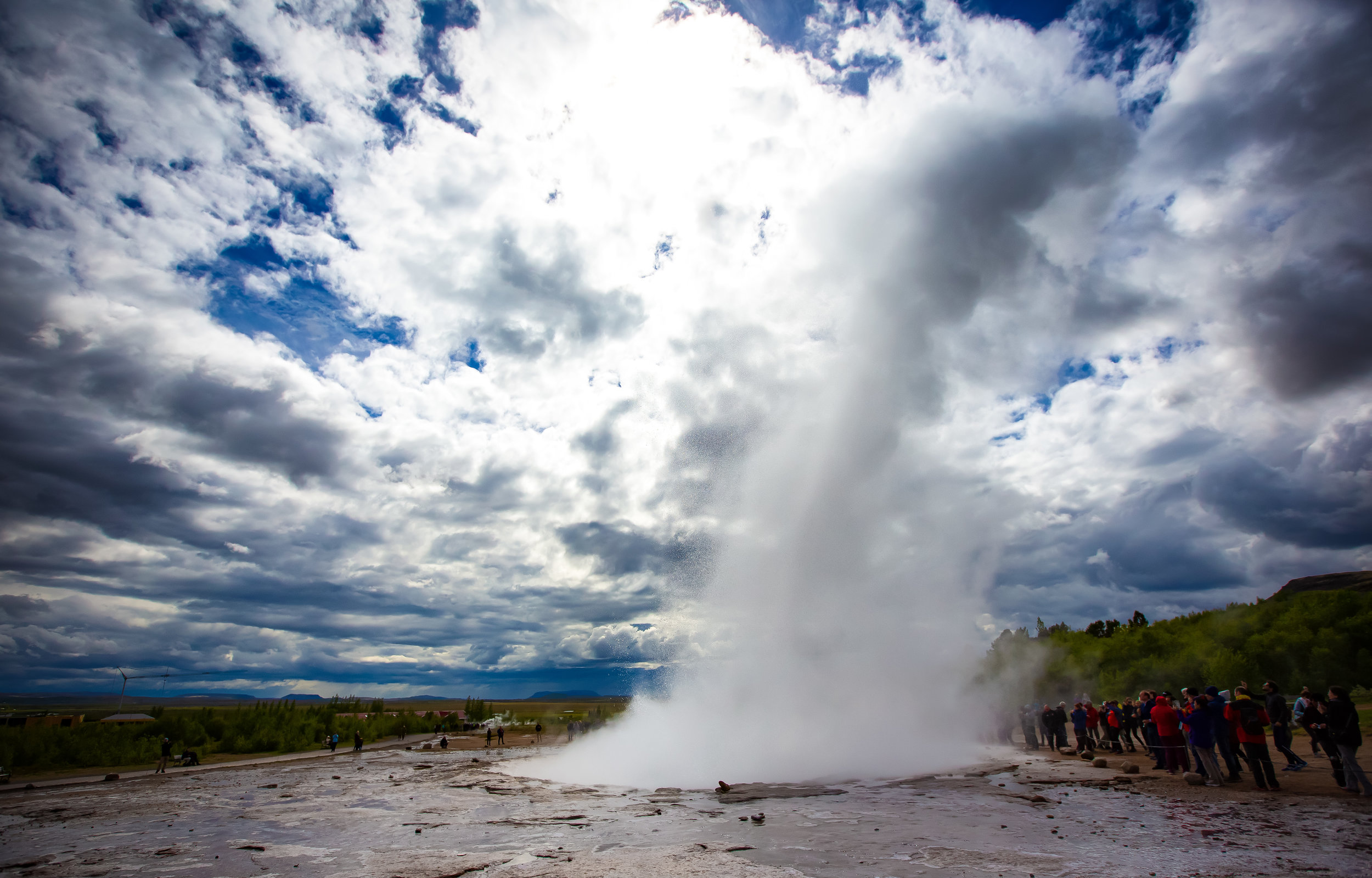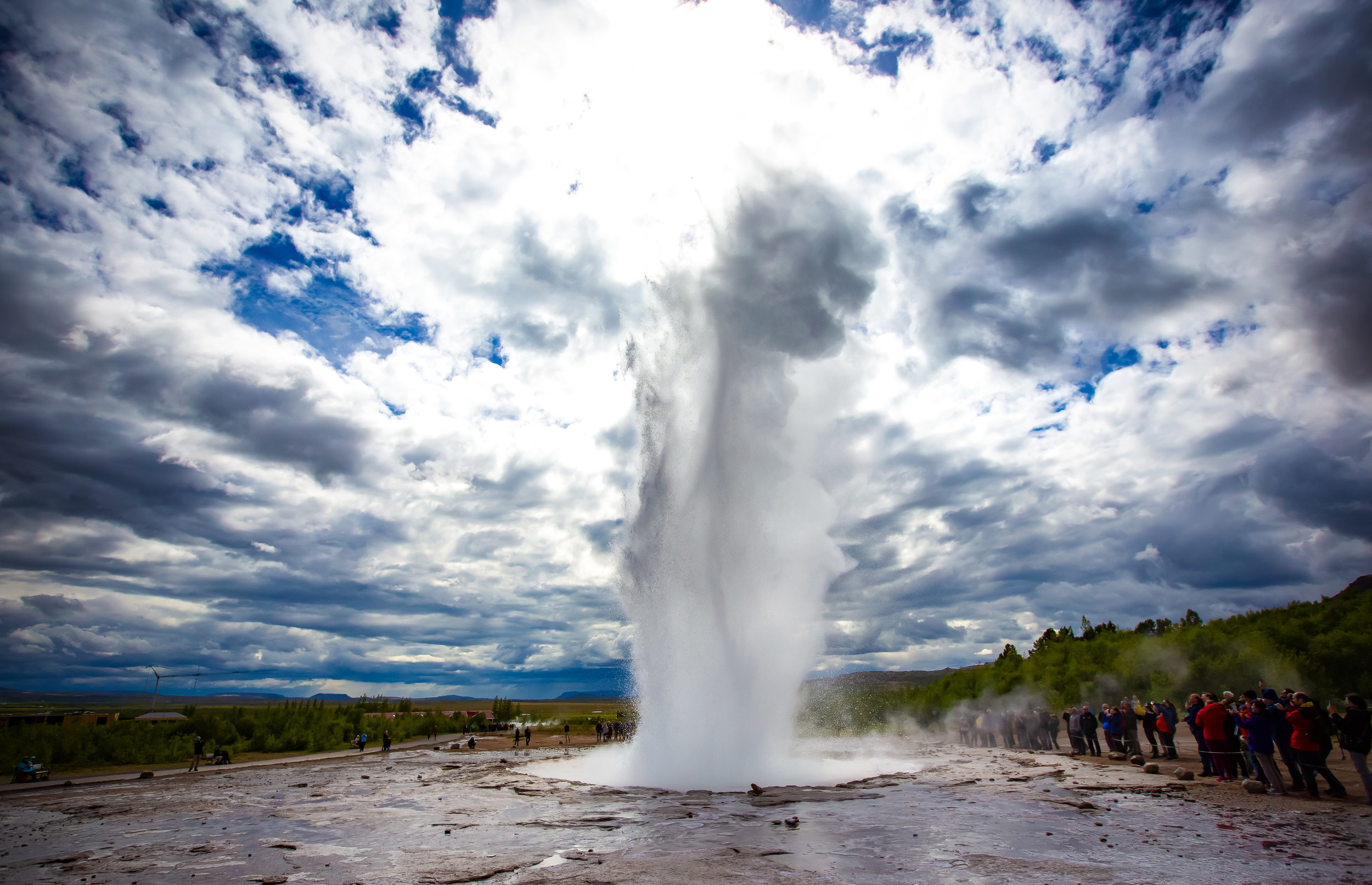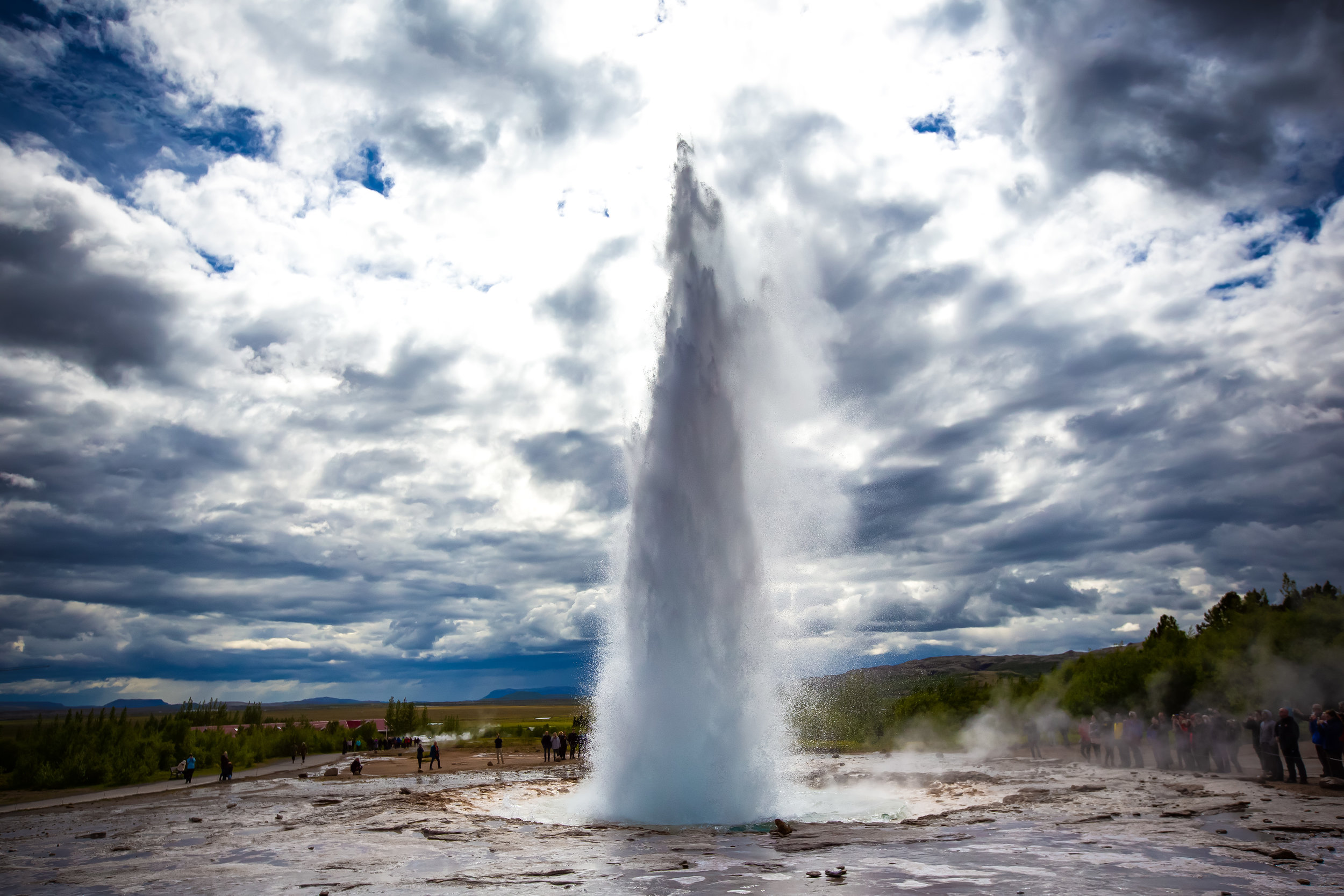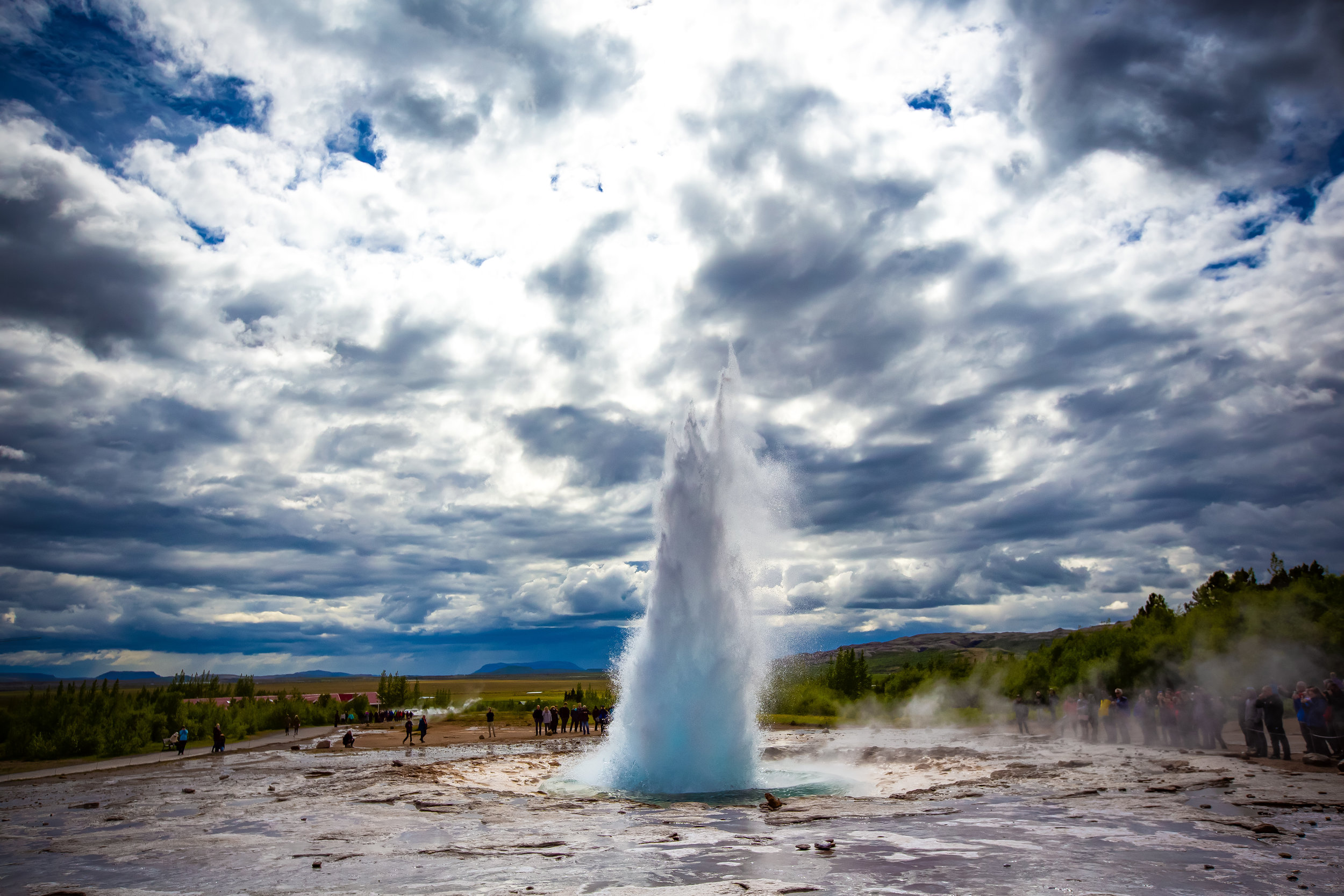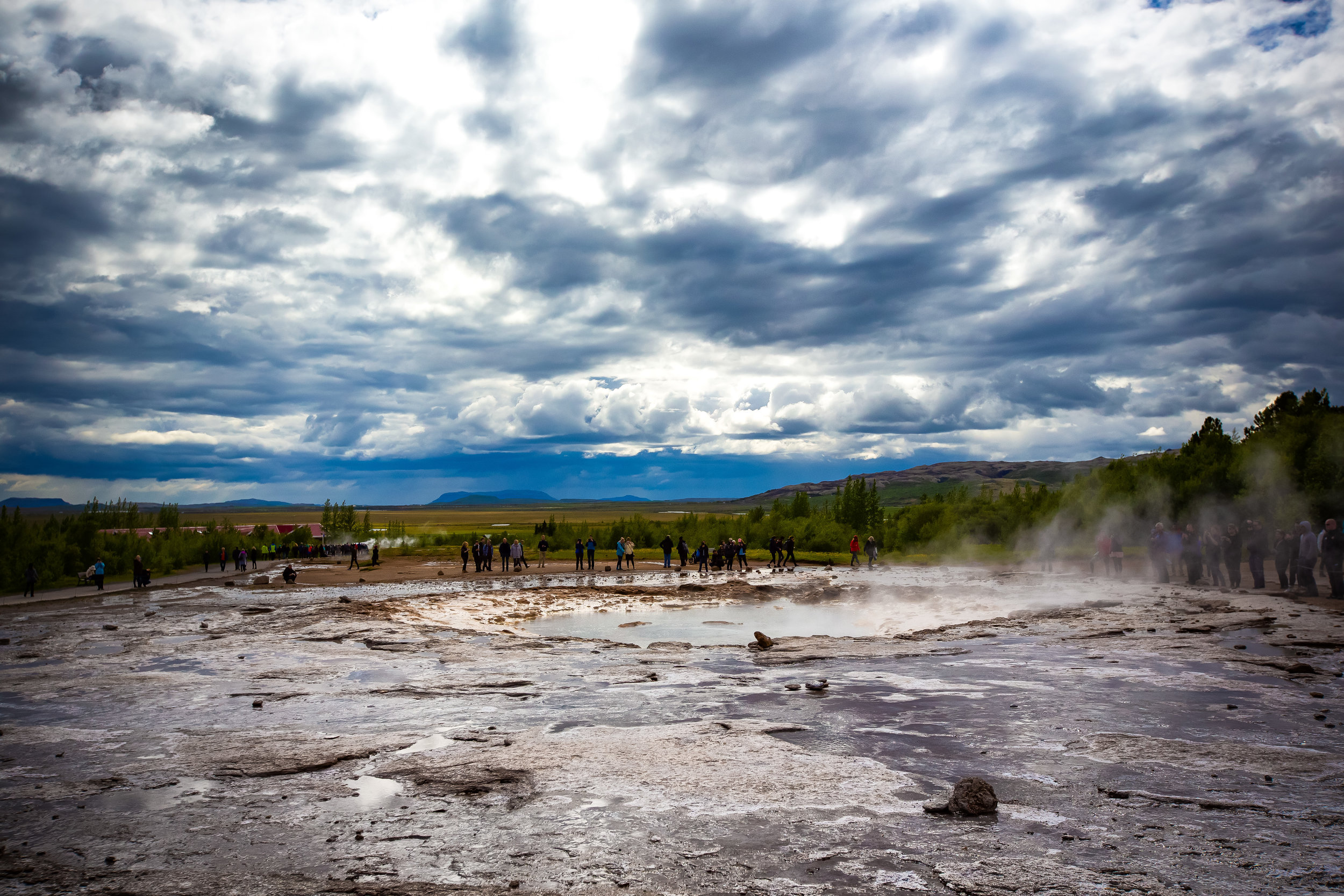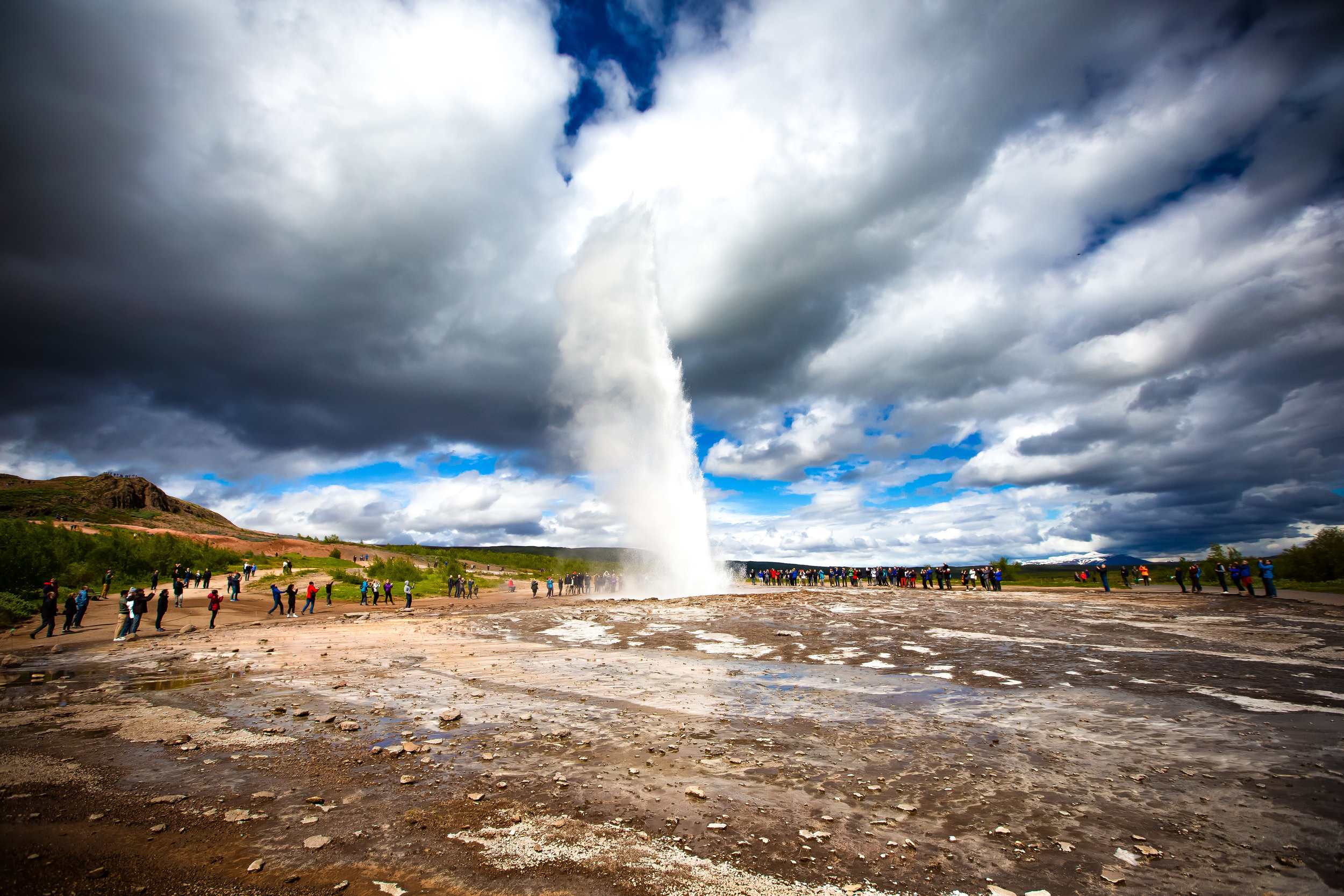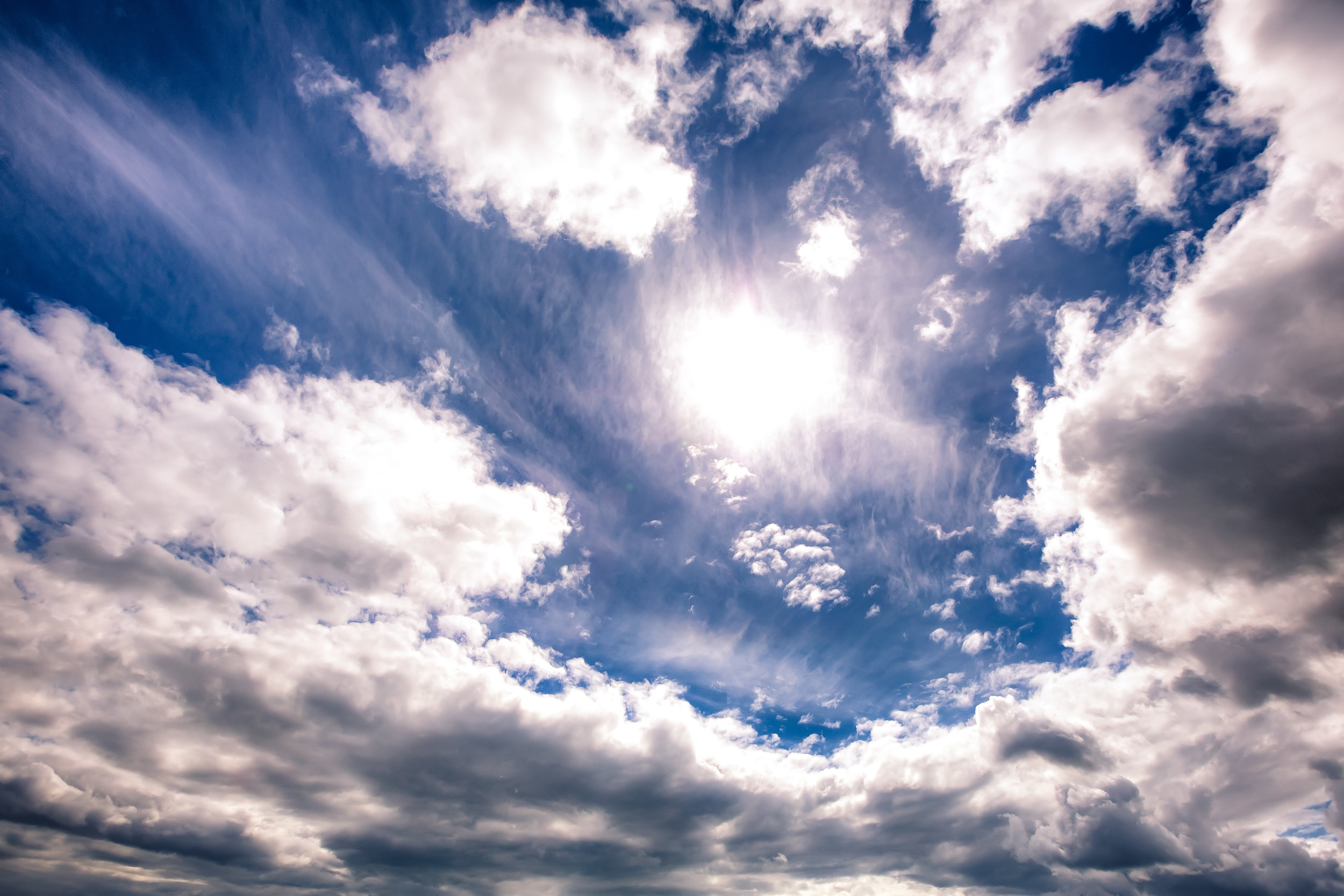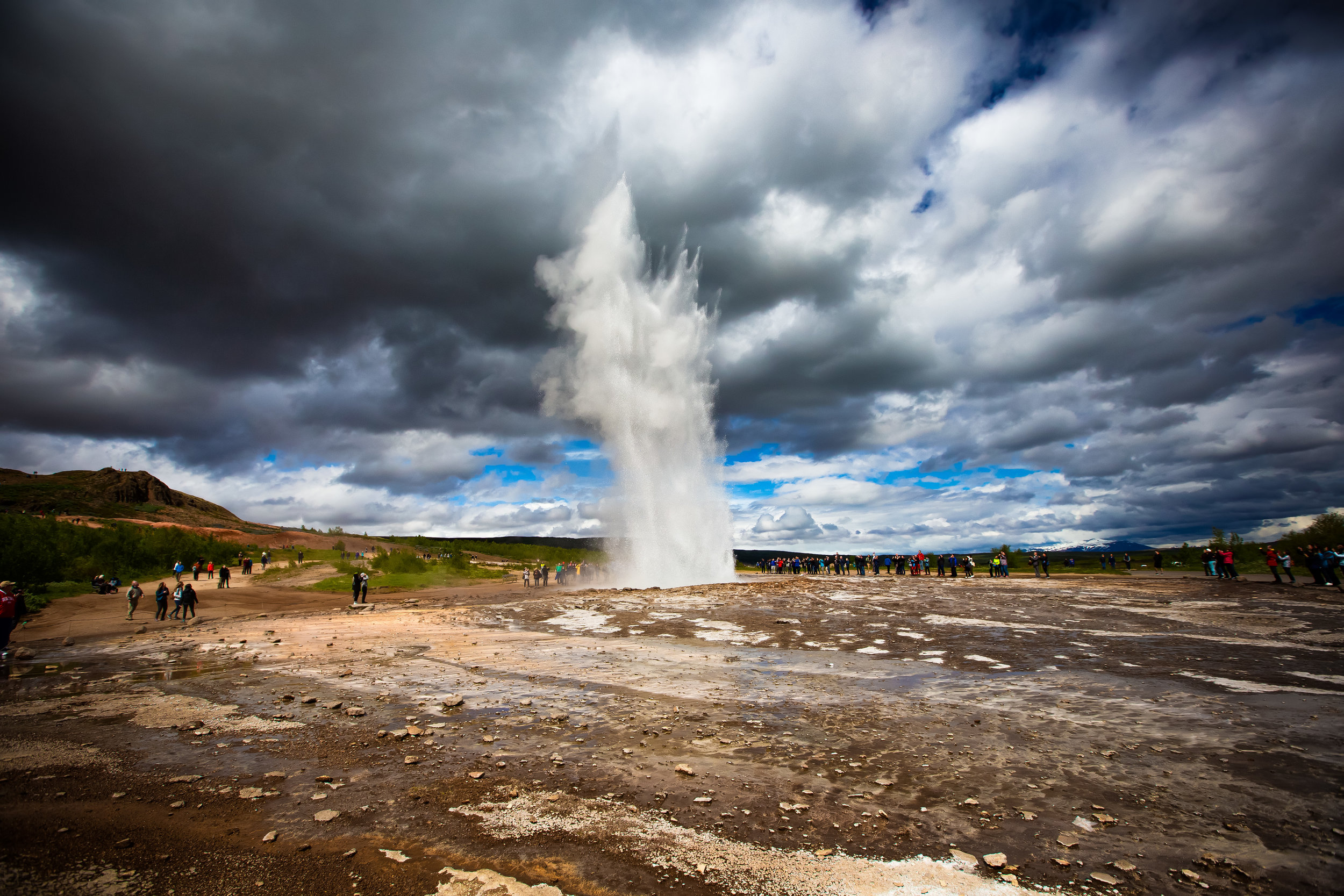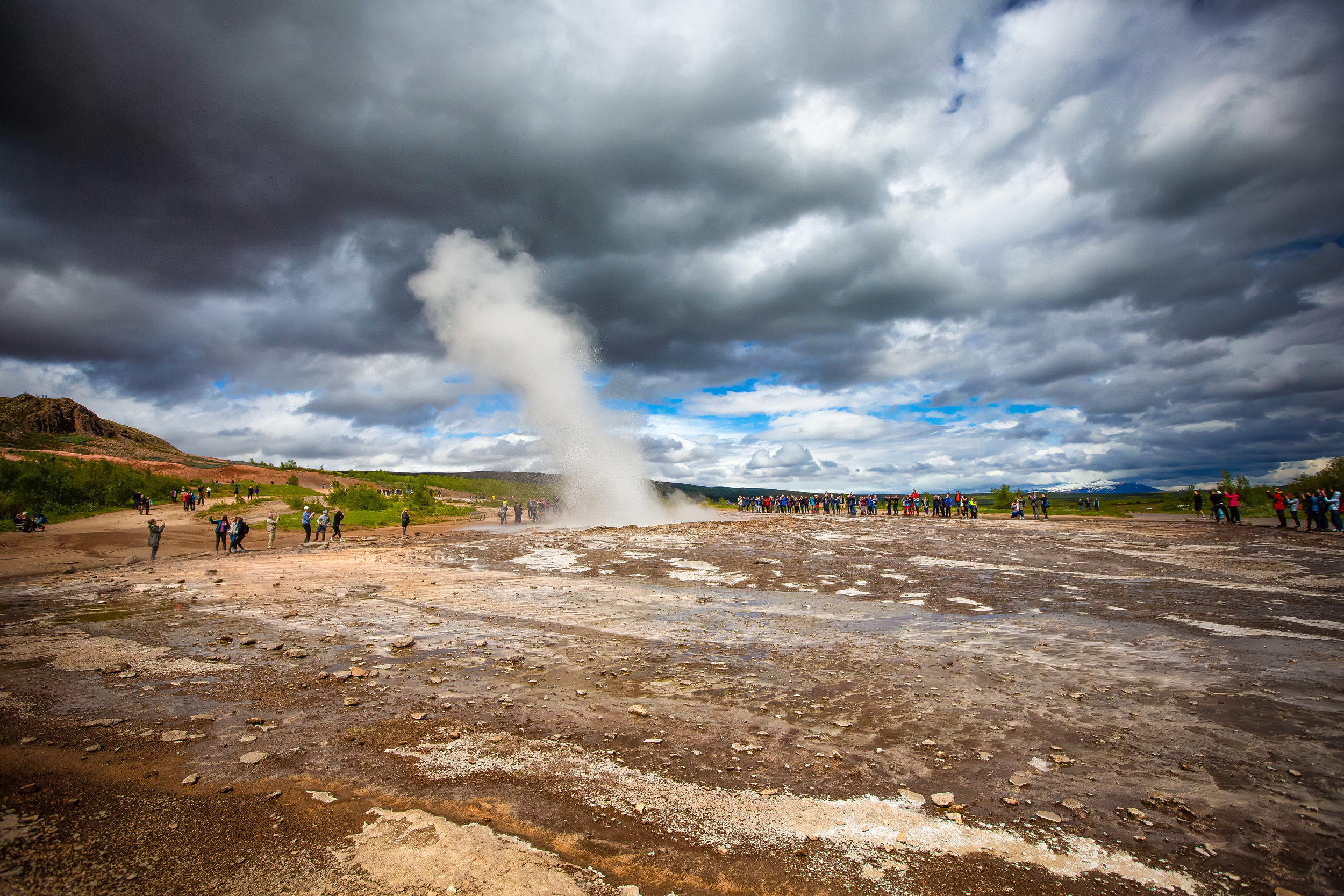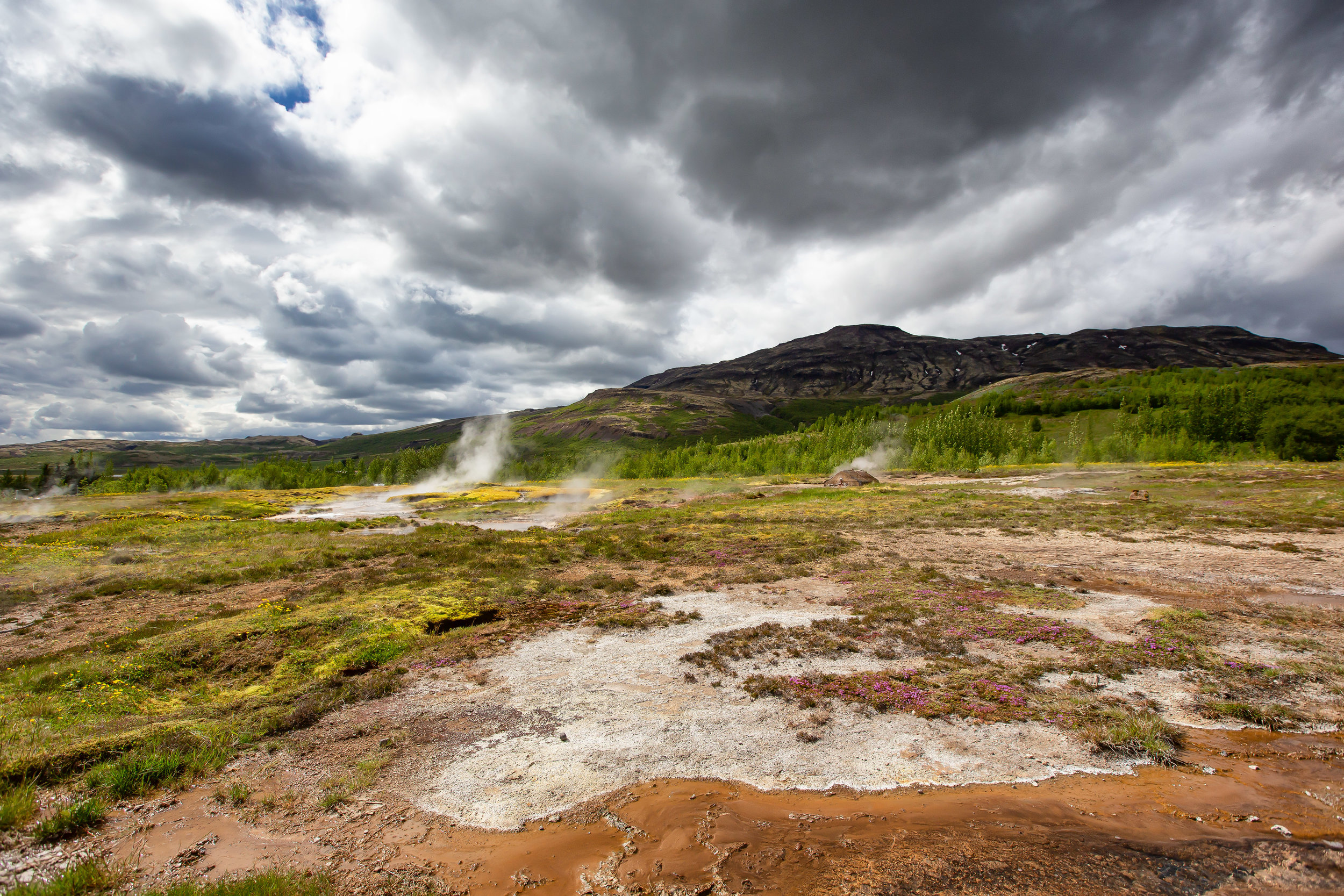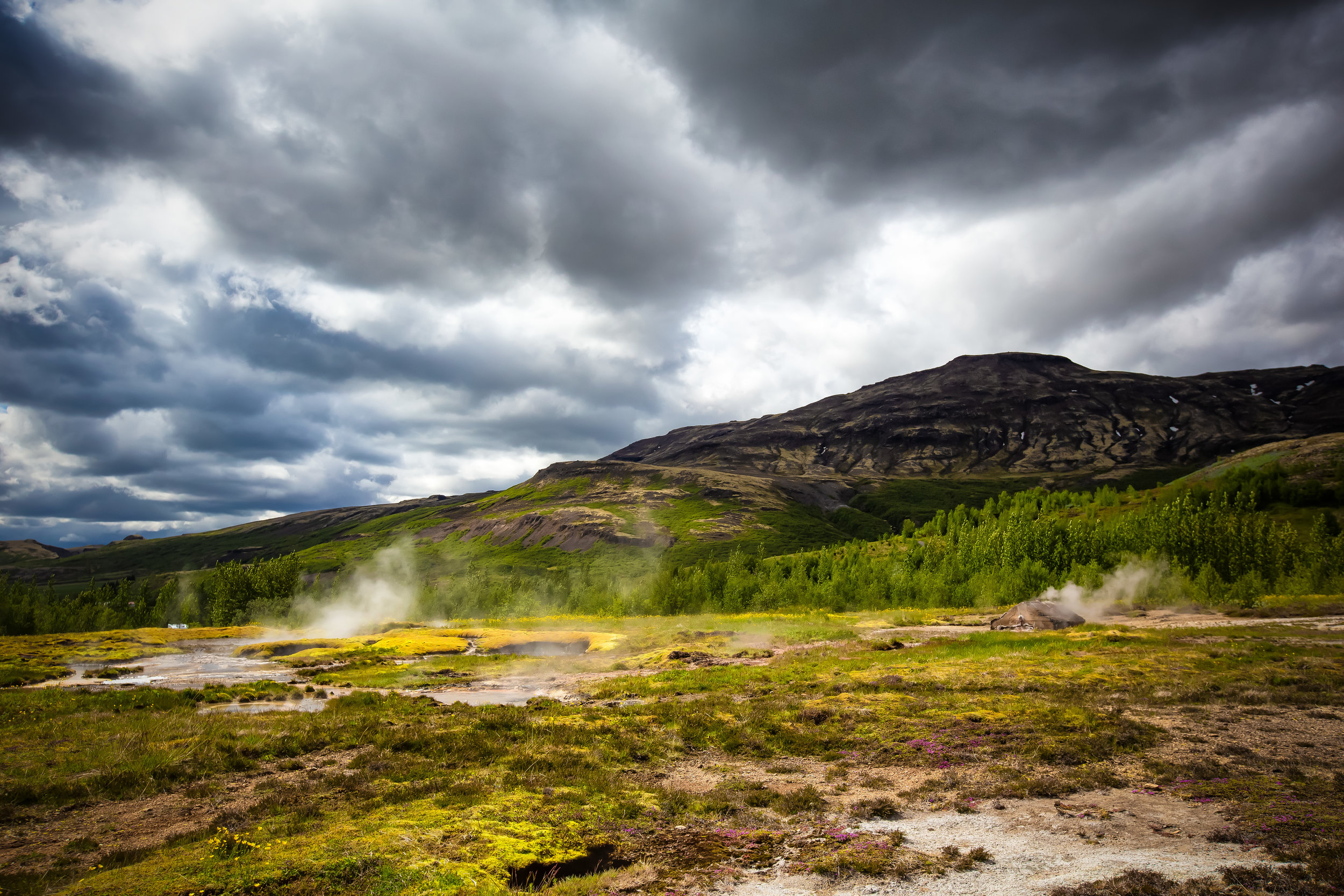Featuring quite a few of Iceland’s most iconic tourist destinations, the aptly named “Golden Circle” tourist route is one of the most popular excursions for anyone visiting the country.
The 300 kilometre route is a loop that takes you from the capital city of Reykjavik into the southern area of the country and then back again to the capital.
Usually completed as a day-trip, the Golden Circle is situated on a well-established route that can be visited year-round. The popularity of the route also means that tourists will have a variety of options when considering their itinerary and how they’ll get around.
The three primary stops along the Golden Circle are the Þingvellir National Park, the Geysir Geothermal Area and Gullfoss Waterfall, but there is so much more than you can see and do while making your way around the loop.
With this blog post, I will offer short introductions to some of the most popular attractions along the Golden Circle as well as provide links to the articles I’ve posted about each location.
I will also offer some travel tips and advice for getting around and making the most of your trip.
Route Map
The Golden Circle is an extremely easy route to follow - Once you get yourself outside of the capital city, its more or less a straight drive as you pass by the most important stops along the way.
There are of course other locations that you can check out, but it would be hard to argue that you’d get lost along the way. Most of the destinations are just a simple stop off the main highways.
If you are travelling by car, its likely that you’ll have access to a GPS either in the car or on your phone - Use of a GPS will ensure that you arrive at your destination and most importantly at the best parking space.
The entire route is about 300 kilometres in length, but once you get started you’ll find that each location is never more than an hour away from the previous one.
There are also many other scenic locations to stop along the way for some photos - especially the vast fields full of Icelandic horses!
Þingvellir National Park
Once you’ve left Reykjavík, the first place you’ll find yourself driving through is the historic Þingvellir National Park (Pronounced Thingvellir) which has a special place in the hearts of the Icelandic people.
The drive through the park is beautiful and there are several places where tourists can stop along the way to enjoy the beautiful scenery.
The first major destination along the route is the beautiful Öxaráfoss Waterfall.
The waterfall admittedly isn’t as big as some of the others that you’ll see during your Icelandic travels, but it is a beauty and the area was featured as a shooting location for the Game of Thrones television series.
Visiting the waterfall is free of charge and is a short walk from the parking lot.
The second major destination along the route is Geysir Geothermal Area.
The park, which is also free of charge is known for its somewhat dormant ‘Great Geysir’ as well as the very active Strokkur geyser which erupts every five to ten minutes.
When visiting, its a good idea to stick around to see a few of the geysers eruptions, check out some of the hot spring pools and possibly also taking a walk up the small mountain for some great views of the valley.
You won’t need a lot of time to visit this area, but it certainly is an enjoyable one - especially if you haven’t seen a live geyser erupt before!
Gullfoss Waterfall is probably the most important stop along the Golden Circle day route.
The giant waterfall is one of the most spectacular in the whole of Europe and is a must-stop destination for anyone visiting the country.
The waterfall, which is known in English as the “Golden Waterfall” has well-developed walking paths and allows for visitors to get very, very close - and of course, entry is free of charge!
Once you’ve visited the three most important of the Golden Circle’s destinations, depending on how much time you have, you’ll likely be able to visit a few more of the destinations along the route back home.
One location which I highly recommend is the relatively unpopular Faxifoss Waterfall.
The waterfall, which shares the same water source as Gullfoss is a beautiful set of falls where you are able to walk right up to the shore or to the top of the falls.
Skálholt Cathedral
Quite a few people will stop in the historic significant area of Skálholt to check out the Skálholt Cathedral and some of the archaeological sites nearby.
For eight centuries Skálholt was one of the most important political and religious areas in the country.
The current cathedral is only a few decades old, but is built in Icelandic style and visitors are welcome to go inside to check it out.
A visit to the church is a nice break from enjoying all of the waterfalls and natural landscapes that you will have already seen during your tour.
One of the final stops along the Golden Circle route before reaching the town of Selfoss is Crater Kerið.
The giant volcanic crater was formed by a huge volcanic explosion that forced the volcano to collapse.
Visitors are able to walk around the edge of the 55 meter deep and 170 meter wide crater’s edge before eventually descending down to water-level to check out the pristine water of the crater lake.
Getting around the Golden Circle
If you’re travelling through Iceland, the best thing you could do is rent a car in advance and pick it up directly at the airport.
Renting a car is your cheapest option for transportation as buses and taxi’s will end up costing considerably more than driving a car would.
If you are adamant that you don’t want to drive a car, there are a variety of options to get you around the Golden Circle. You could arrange to hire a cab in Reykjavik that will transport you along the route. This will end up being quite expensive, but if you are travelling in a group or can find others willing to travel with you, you can save some cash.
The better option would be to sign up for one of the hundreds of tour options from one of the many tour groups in the capital. Reykjavik Excursions for example has quite a few options for tours along the Golden Circle. Prices there tend to vary between $60-100USD, which seem quite reasonable.
You may also want to consider Gray Line Tours, Arctic Adventures, Reykjavik Sightseeing or check out the Guide to Iceland website which has a lot of information about booking tours.
Tips for Travelling the Golden Circle
Are you driving? Driving yourself is probably the best way to get around the Golden Circle. There are a few things you’ll want to take into consideration before your trip though:
Are you visiting during Summer? The roads are well-maintained and are easy to travel.
Are you visiting during Winter? If so, don’t rent the smallest car possible. You’re going to need a 4x4 to ensure your safety.
Don’t be fooled by the wide open roads. Speeding is going to cost you and there are speed traps all over the route.
There are roundabouts all over the country which are excellent ways to keep people from speeding especially when entering a town. If you are coming up to a roundabout, be sure to reduce your speed as much as possible. There are often speed traps nearby and if you get caught you won’t be happy with the results!
Make sure to have a GPS in your car or have Google Maps available on your phone so that you don’t get lost or randomly pass by one of your destinations. Oxrarfoss for example doesn’t have a lot of signage pointing in its direction. You could pass by without even noticing!
There are only a few gas stations along the route, so you’re going to want to make sure that you leave with a full tank of gas.
You’ll want to take into consideration the direction you’re going to start in - For example, if getting to Gullfoss early in the morning (when its least busy) is your top priority, you may want to start the route from the south. If you prefer a more leisurely drive, you’ll probably want to head directly to Þingvellir National Park.
There aren’t very many places to eat along the route, so it’d be a good idea to pack a lunch with snacks and beverages for the day. The few restaurants along the way are quite expensive.
Stopping along the side of the road to take photos of the beautiful scenery - and of course and Icelandic horses - is recommended but be sure to park somewhere safe that won’t impede traffic. There are many public car stops and camp grounds along the way for you to use!
Save for an entrance fee at Crater Kerið (400ISK/pax) you won’t have to pay entrance or parking fees at any of the other stops along the way - Unless of course you decide to visit one of the hot spring resorts.
Traveling the Golden Circle is a very economic way to see some of the best scenery Iceland has to offer!
Have some extra time? Why not turn the daytrip into a several day trip? To make the most of the Golden Circle, you could easily spend the night in one of the cabins or campsites along the way. Spending the night allows you to see and do more and in the summer allows you much more time to explore!
There are several online guides on the web dedicated to helping people make the best of their Icelandic holiday. If you are looking for more help with tours, accomodations and food options for your trip, be sure to check out some of these excellent resources:
The Golden Circle is a landscape lovers paradise - There is so much to see and do while visiting small patch of heaven. Most people have a wonderful day trip while visiting the area but others spend several days enjoying the beauty of the natural landscape. Whatever you choose to do, you’re sure to have a great time!

